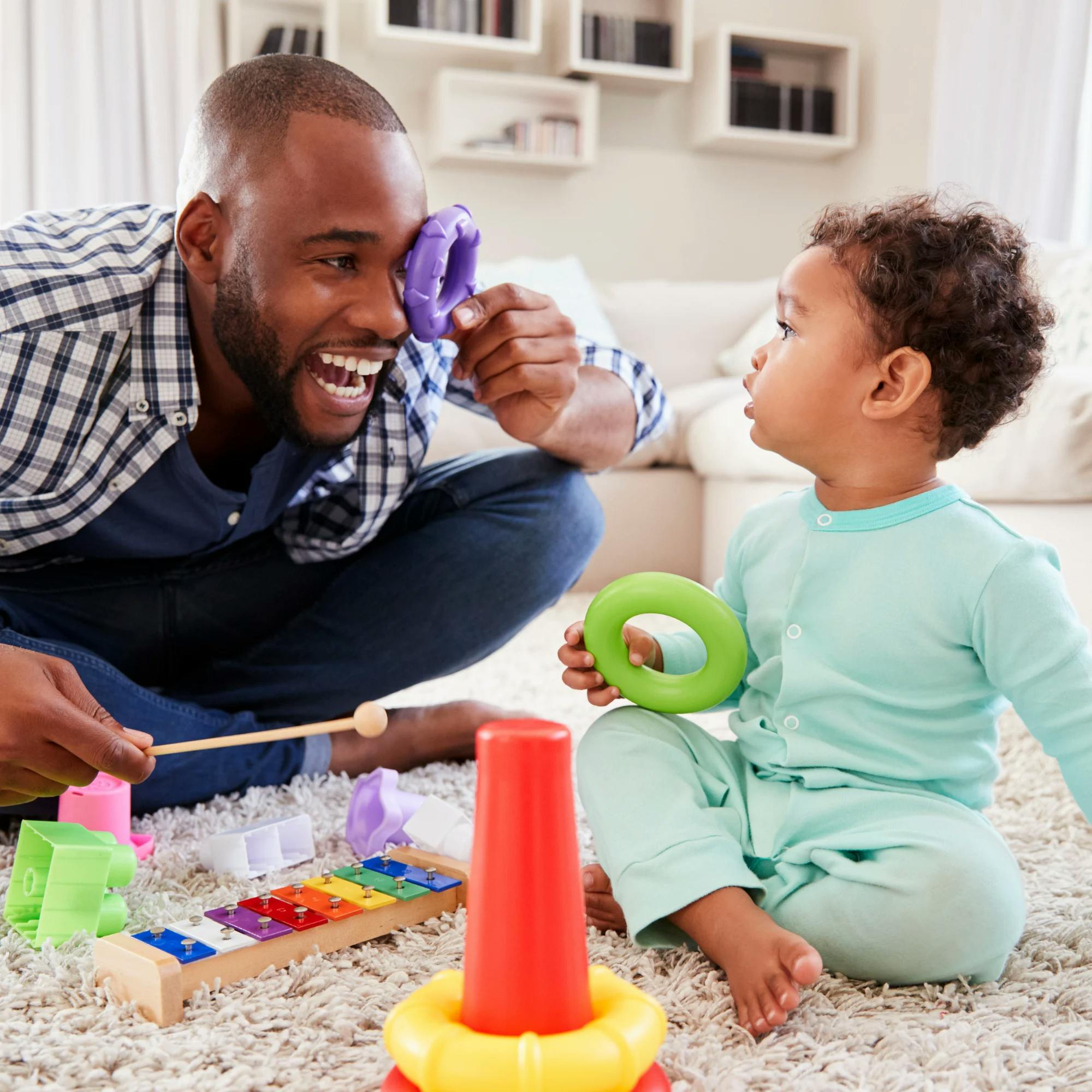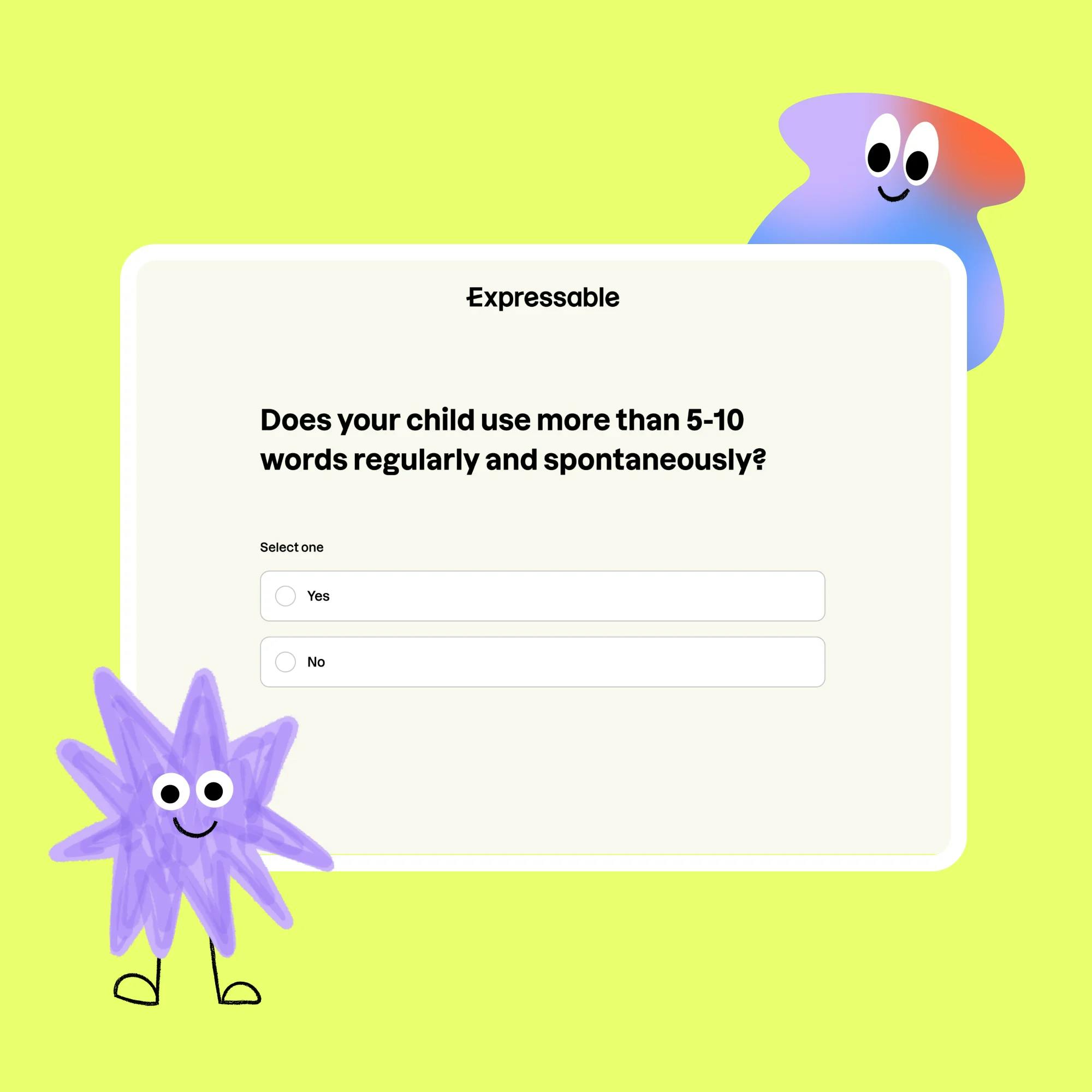
Toddler Tantrums: Does Language Play a Role?
 Abby Barnes, M.S., CCC-SLP
Abby Barnes, M.S., CCC-SLP
The screaming, the kicking, the crying--as parents or caregivers, we've all been there. The dreaded toddler tantrum! Tantrums are the reason the second year of life is often called the “terrible twos.”
No matter your child’s age, tantrums and meltdowns are no fun for anyone. Not for your child, and definitely not for you. We often find ourselves scrambling to figure out what they need at that very moment. But did you know that these behavioral issues can be caused by a child's inability to adequately express themselves?
Let's take a look at toddler tantrums and how language development can cause or contribute to them. While all kiddos experience challenging moments, the information discussed here will help you determine if a speech or language delay could be at the root of your child’s frustrations--and how you can help them.
Curious or concerned?
Our free screener is tailored by age and covers all areas of speech, language, and feeding. Find out if your child might need speech therapy.
 Screener for children
Screener for childrenWhat do toddlers throw tantrums?
Temper tantrums are actually a normal part of child development. Young toddlers haven't yet developed the ability to manage their emotions in a socially appropriate way. Whether your child is experiencing big feelings of anger or disappointment, or they're simply hungry or tired, these emotions can build up and explode with an outburst. Tantrums leave parents feeling tense, as well.
While meltdowns are developmentally normal, one thing that can make tantrums more challenging is a child's inability to express why they’re upset. For some children, this can be worsened by a language delay. Sometimes the language delay itself can be the cause of the meltdown. Not being able to communicate our wants and needs would make anyone upset. That's especially true with a young child who doesn't yet understand how to express their thoughts and handle their emotions calmly.
Signs of a speech or language delay
Just because a child has tantrums doesn’t mean they have a language delay. However, if a toddler does have a language delay, then tantrums may happen more often in day-to-day life.
Let’s take a closer look at how to determine if language delays are playing a role in your child's behavioral issues.
To do this, it's important to first determine if a child is meeting age-appropriate expressive language norms. Here are a few signs to look for:
If a child is 2 years old, they should be able to communicate using two-word phrases. Examples can include "More please" or "Give me."
If a child is 3 years or older, they should be able to communicate in at least four-word sentences. Examples can include "I want that one" or "Can I do that?"
If your child seems to be struggling with communication, even during times when they are not highly emotional, overwhelmed, or disappointed, a language delay may be present. In moments of frustration, you can assume that the language delay is likely a big contributing factor to the tantrum.


How to handle and respond to a tantrum
Tantrums are one of the most challenging parts of parenthood. In order to help a child better communicate during an emotionally charged situation, it's important to first attempt to pacify your child. After they calm down, it's now time to figure out what your child needs. Follow these tips as a guideline when dealing with your child’s tantrum:
Validate the child’s feelings. Let them know that you see how they’re feeling.
Model how to stay calm for the child, even when they're upset. Speak calmly to the child and don’t raise your voice.
If needed, take the child to a quiet, safe place.
After the child is calm, ask them what they need. If they're unable to tell you, you could say, “Show me what you need” or “Show me what’s wrong.”
You can also make communication easier by using yes/no questions. These are questions such as, “Are you hungry?” or “Are you hurt?” Try to avoid asking too many questions at once, and make sure to give your child time to process their answers and formulate their response.


When should you contact a speech therapist?
Apart from helping a child learn manage their emotions, calm down, and more appropriately express their needs after a tantrum, it’s also important to make sure they are communicating in everyday situations. Children need to communicate with others during happy moments as well as moments of displeasure.
Language development is an ongoing process that starts in infancy. That's why it's so important to identify a language delay as early as possible.
If you suspect your child may have a speech or language delay, don't wait to act. First, speak with your child’s pediatrician. They're a great source of information to help determine if a referral for speech therapy is warranted. It also never hurts to have your child professionally evaluated by a speech therapist. They can help you better understand whether your child is reaching age-appropriate communication milestones and, if necessary, work with you and your child on techniques and strategies to reach your goals.


How to help your child with their speech
While working with a professional speech therapist can be extremely beneficial, you can also practice speech at home! Don’t wait until after your child begins speech therapy to start working together.
Check out this article for some fun, everyday activities to help your little one increase their communication skills. Speech practice doesn't have to be elaborate. Children learn best when they're engaged in natural, everyday routines.
Finally, as energizing as it can feel to have a game plan to improve your child's language, it's critical to set appropriate goals. You want to make sure you're working on skills at their current level, and only prompt a response from them that is slightly more mature than what they typically present. Expecting too much, too quickly from your child can cause frustration--which is exactly what we're trying to avoid!
Working on these techniques with your child, and determining whether a language delay may be part of their tantrums, is key to helping them better process, express, and manage their emotions.
How Expressable Can Help
Concerned your child isn't reaching age-expected milestones? Looking for communication support from a professional? Expressable is a national online speech therapy practice serving children and adults. We treat all major areas of communication and feeding, offer flexible hours including evenings and weekends, and accept most major health insurance plans. We’re proud to have earned more than 3,000 5-star reviews from our clients (4.9/5 average).
Our therapy model is centered on parent and caregiver involvement. Research proves that empowering caregivers to participate in their loved one’s therapy leads to better outcomes. That’s why we combine live, 1-on-1 speech therapy with personalized education and home practice activities for faster progress.
Communication is more than words. It’s how we share how we feel and show who we are. We’re here to help you or your child do just that.













